Steve Liu
Hallucination Detection and Hallucination Mitigation: An Investigation
Jan 16, 2024Abstract:Large language models (LLMs), including ChatGPT, Bard, and Llama, have achieved remarkable successes over the last two years in a range of different applications. In spite of these successes, there exist concerns that limit the wide application of LLMs. A key problem is the problem of hallucination. Hallucination refers to the fact that in addition to correct responses, LLMs can also generate seemingly correct but factually incorrect responses. This report aims to present a comprehensive review of the current literature on both hallucination detection and hallucination mitigation. We hope that this report can serve as a good reference for both engineers and researchers who are interested in LLMs and applying them to real world tasks.
Device-Free Human State Estimation using UWB Multi-Static Radios
Dec 26, 2023

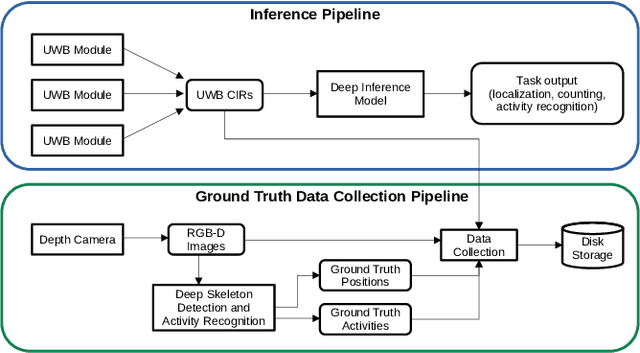
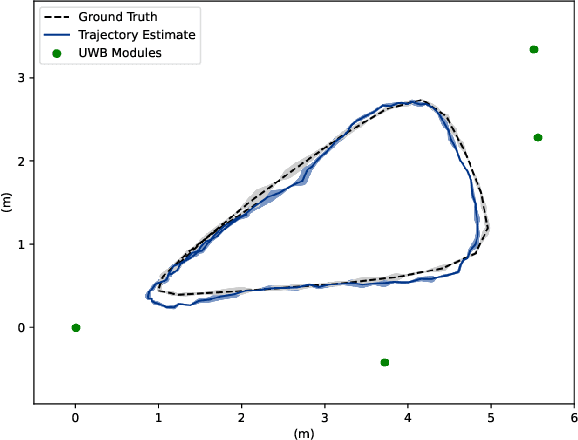
Abstract:We present a human state estimation framework that allows us to estimate the location, and even the activities, of people in an indoor environment without the requirement that they carry a specific devices with them. To achieve this "device free" localization we use a small number of low-cost Ultra-Wide Band (UWB) sensors distributed across the environment of interest. To achieve high quality estimation from the UWB signals merely reflected of people in the environment, we exploit a deep network that can learn to make inferences. The hardware setup consists of commercial off-the-shelf (COTS) single antenna UWB modules for sensing, paired with Raspberry PI units for computational processing and data transfer. We make use of the channel impulse response (CIR) measurements from the UWB sensors to estimate the human state - comprised of location and activity - in a given area. Additionally, we can also estimate the number of humans that occupy this region of interest. In our approach, first, we pre-process the CIR data which involves meticulous aggregation of measurements and extraction of key statistics. Afterwards, we leverage a convolutional deep neural network to map the CIRs into precise location estimates with sub-30 cm accuracy. Similarly, we achieve accurate human activity recognition and occupancy counting results. We show that we can quickly fine-tune our model for new out-of-distribution users, a process that requires only a few minutes of data and a few epochs of training. Our results show that UWB is a promising solution for adaptable smart-home localization and activity recognition problems.
SAGE: Smart home Agent with Grounded Execution
Nov 01, 2023Abstract:This article introduces SAGE (Smart home Agent with Grounded Execution), a framework designed to maximize the flexibility of smart home assistants by replacing manually-defined inference logic with an LLM-powered autonomous agent system. SAGE integrates information about user preferences, device states, and external factors (such as weather and TV schedules) through the orchestration of a collection of tools. SAGE's capabilities include learning user preferences from natural-language utterances, interacting with devices by reading their API documentation, writing code to continuously monitor devices, and understanding natural device references. To evaluate SAGE, we develop a benchmark of 43 highly challenging smart home tasks, where SAGE successfully achieves 23 tasks, significantly outperforming existing LLM-enabled baselines (5/43).
CeBed: A Benchmark for Deep Data-Driven OFDM Channel Estimation
Jun 23, 2023Abstract:Deep learning has been extensively used in wireless communication problems, including channel estimation. Although several data-driven approaches exist, a fair and realistic comparison between them is difficult due to inconsistencies in the experimental conditions and the lack of a standardized experimental design. In addition, the performance of data-driven approaches is often compared based on empirical analysis. The lack of reproducibility and availability of standardized evaluation tools (e.g., datasets, codebases) hinder the development and progress of data-driven methods for channel estimation and wireless communication in general. In this work, we introduce an initiative to build benchmarks that unify several data-driven OFDM channel estimation approaches. Specifically, we present CeBed (a testbed for channel estimation) including different datasets covering various systems models and propagation conditions along with the implementation of ten deep and traditional baselines. This benchmark considers different practical aspects such as the robustness of the data-driven models, the number and the arrangement of pilots, and the number of receive antennas. This work offers a comprehensive and unified framework to help researchers evaluate and design data-driven channel estimation algorithms.
Communication Load Balancing via Efficient Inverse Reinforcement Learning
Mar 22, 2023
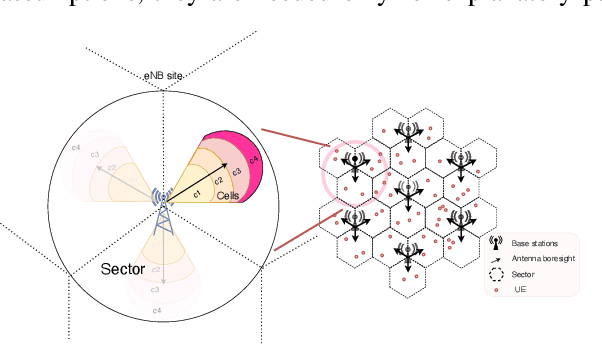
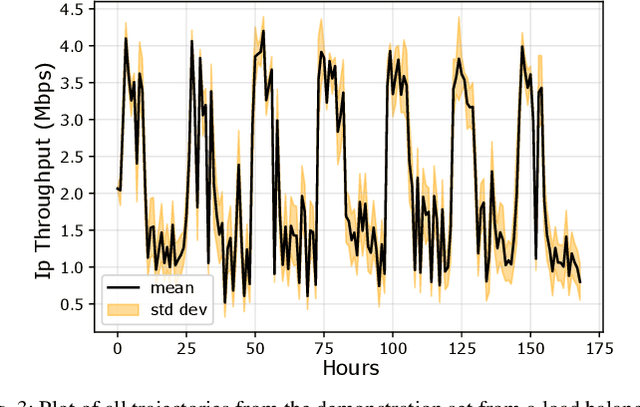
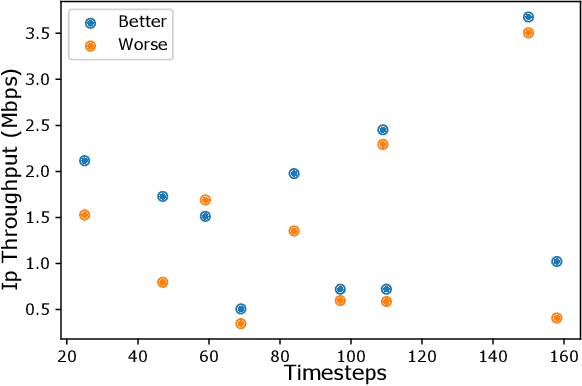
Abstract:Communication load balancing aims to balance the load between different available resources, and thus improve the quality of service for network systems. After formulating the load balancing (LB) as a Markov decision process problem, reinforcement learning (RL) has recently proven effective in addressing the LB problem. To leverage the benefits of classical RL for load balancing, however, we need an explicit reward definition. Engineering this reward function is challenging, because it involves the need for expert knowledge and there lacks a general consensus on the form of an optimal reward function. In this work, we tackle the communication load balancing problem from an inverse reinforcement learning (IRL) approach. To the best of our knowledge, this is the first time IRL has been successfully applied in the field of communication load balancing. Specifically, first, we infer a reward function from a set of demonstrations, and then learn a reinforcement learning load balancing policy with the inferred reward function. Compared to classical RL-based solution, the proposed solution can be more general and more suitable for real-world scenarios. Experimental evaluations implemented on different simulated traffic scenarios have shown our method to be effective and better than other baselines by a considerable margin.
 Add to Chrome
Add to Chrome Add to Firefox
Add to Firefox Add to Edge
Add to Edge